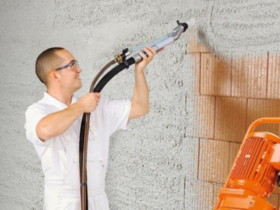Currently, the insulation of the house is the current issue. Many people mistakenly think that this implies only the creation of a warm climate in the room. However, in fact, these measures also contribute to increasing the environmental friendliness of the building, by reducing thermal losses, and therefore saving municipal embezzlement.
You can insulate the room only in some places in which the presence of heat leaks is established in advance, or you can — the entire building as a whole. This process is quite laborious: when using expensive materials, it requires large costs, which not everyone has the opportunity to make the ability to make, therefore, thermal insulation of the house is expensive and little budget, for every taste and wallet will be presented.
House insulation is carried out using thermal insulation materials. They come from inorganic raw materials and natural.
Inorganic heater
Mineral wool. The name corresponds to reality. The material is similar to ordinary cotton wool. It is made of rock fibers and waste of their processing. This thermal insulation is a breathing layer, allows you to maintain thermal energy, increase the sound insulation of the room. The material does not burn, which means less fire hazard. The disadvantages include the fact that cotton wool is strongly overtaken by moisture, and parasites can be started inside it.
Foam (polystyrene foam) to everyone so familiar from childhood. The fragile material that does not withstand the loads burns perfectly, with the release of toxic substances, does not miss the air at all, but it practically does not absorb moisture and protects the room from heat transfer well.
Extruded polystyrene foam or EPPS — an improved version of simple foam. All characteristics are similar, except for one. It is stronger, therefore and more reliable.
«Warm» plaster. Breathing material does not burn, does not absorb moisture and at the same time is excellent heat and sound insulation.
Organic insulation
Cork materials. Produced from cork wood bark, as well as from products of its processing. Such material is a breathas of air, protected from moisture filling, and, consequently, from the growth of mold and fungal microorganisms. But there is a significant minus. When ignited, the cork layer flashes like a match.
Cellulose cotton wool. Cotton wool created from waste paper. Fragile material. Most often treated with antipyrens to reduce the ability to fire. Vata breathes, protected from mold and fungal microorganisms, but is prone to accumulate moisture.
Hemp — a material that is the basis of stump fibers. Forms a breathable layer of thermal insulation, does not allow fungi to grow on its surface, but also, like cotton wool is not strong.
Straw. It passes the air well, but at the same time burns perfectly. To reduce fire hazard is treated with antipypens.
Seaweed. Do not burn, do not deteriorate, do not dilute mold and fungi, pass the air well, but are very fragile material.
For each part of the house, it is more advisable to use a certain type of thermal insulation. It should be selected taking into account moisture and temperature indicators in the insulated place. The presence of leaks, access of sunlight, possible temperature changes and the purpose of the room are also important.
The foundation and walls are usually insulated outside the building, but the roof, attic, floor and ceilings are inside.
For the foundation, for example, hydrophobic material will be suitable — extruded polystyrene foam. For walls, you can choose various types of watts from polystyrene foam, algae, straw, hemp, as well as “warm” plaster. By the way, it is the most environmentally friendly material. The choice in this case depends on which type of wall laying was used in the construction of the building.
To warm the roof, you need to focus on the presence or absence of leaks, sunlight access. You can use cotton wool, hemp, algae, extruded polystyrene foam and straw. But insulating the attic, it is better to choose cotton wool and vapor barrier film. If the latter is insulated correctly, then the ceiling in such manipulations does not need.
For the floor, the use of traffic jams, wool, straw, algae, extruded or ordinary polystyrene foam will be ideal.
The main thing is to thoroughly study all the factors present in a place requiring insulation, and already accordingly they choose the most suitable thermal insulation material.
Unfortunately, few independently, without the help of a professional, will be able to competently warm the house. It is likely to spend a lot of money, but in reality you cannot achieve the desired result and make only worse. But, knowing some features of the materials, you can try to choose the buildings suitable for different parts, be sure to take into account the goals of the use of the house, the degree of humidity in these places, the access of sunlight and other factors.













Оставить коммент.